Table of Contents
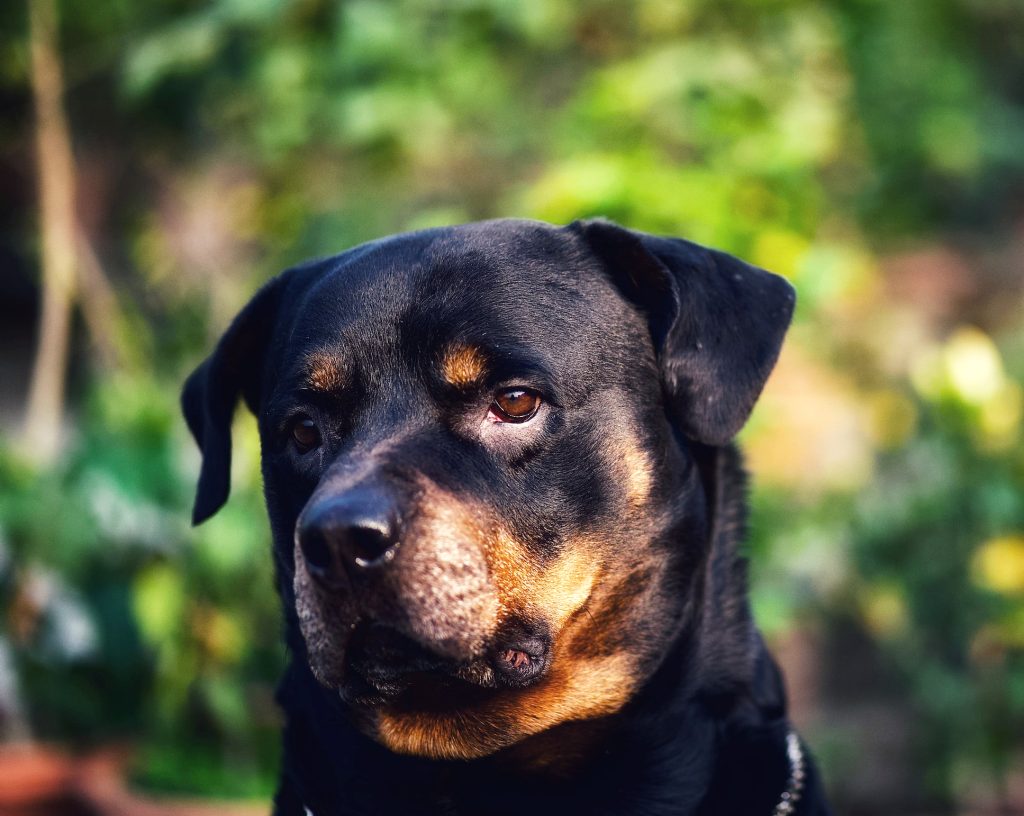
Disclaimer: I am not a vet, but an enthusiastic pet owner with a diverse knowledge of dogs, cats and other pets. Writing well researched articles recommending dog friendly products to in-depth guides. Please seek a certified vet for a professional opinion on your dog, these articles are written from my own research and opinions. Please read our Terms and Conditions for more! As an Amazon associate I earn from qualifying purchases.
Our dogs have an incredible ability to communicate with us using a variety of both vocal and nonverbal cues. One aspect of their nonverbal communication is their facial expressions.
While humans rely heavily on eyebrows for conveying emotions and intentions, have you ever wondered if dogs, particularly Rottweilers, have eyebrows?
In this article, we will explore if Rottweilers have eyebrows, and if so, how they use them to convey their feelings towards their owners.
Do dogs have eyebrows?
The short answer is yes, through domestication dogs have developed distinctive eyebrows and strengthened muscles in their face.
Now for the long answer, dogs and their relationship with humans was derived from wolves. Scientists suggest that friendship between wolves and humans started with the adoption of wolves from a young age. Between 29,000 and 15,000 years ago humans started to introduce wolves into their life as pets, hunting helpers and companions. Through the domestication, wolves have evolved into what we now call dogs. Through this process dogs have developed significant ways of communicating with us, especially through the use of body language and facial expressions.
Plus, unlike dogs, wolves do not have the ability to show facial expressions through their facial features like eyebrows. The expressions dogs possess has deepened the connection between man and dog.

Credit Unsplash.com User @Pramod
Why do dogs have eyebrows?
So far we’ve learnt that scientists suggest dogs have evolved from wolves, but that doesn’t explain the purpose of eyebrows and facial expressions.
Over time, as dogs became more close with humans and developed a stronger bond with them, facial markings (like the Rottweilers discolouration of fur) may have become more pronounced or emphasised through selective breeding.
Humans are highly attuned to facial expressions, particularly around the eyes and eyebrows. Dogs may have developed these features to enhance their communication with humans. Leading to dogs developing eyebrows as a way of communicating with their owners.
These eyebrow-like markings can help dogs convey various emotions and intentions. Raised eyebrows can indicate surprise, curiosity, or attentiveness. While lowered or drawn-in eyebrows can indicate fear, worry, or aggression. Dogs are able to use their entire face, including their eyes and eyebrow-like markings, to communicate with humans and other dogs.
Do Rottweilers have eyebrows?
Rottweilers have arguably the most prominent eyebrows of any dog breed. The distinctive orange fur is very noticeable even for non-dog owners.
In addition to the eyebrow-like markings, Rottweilers also have an apparent ridge bone, or “supraorbital arch”. The ridge bone that lies above the eyes and extends across the forehead. While it is more noticeable in certain breeds, such as Labradors or Bulldogs, Rottweilers also have a defined ridge bone.
The ridge bone serves several functions. It helps protect the eyes almost like a shield against potential injuries, such as impacts or scratches from branches or other sharp objects. The ridge bone also adds to the overall structure of the dog’s skull and appearance, giving some breeds a distinctive look.
Can Rottweilers communicate with their facial expressions?
Yes, Rottweilers, like all dogs, can communicate with their facial expressions. Dogs, including Rottweilers, have a range of facial expressions that they use to convey various emotions and thoughts.
A Rottweiler’s facial expressions can communicate emotions such as happiness, excitement, fear and stress. They can raise or lower their eyebrows, widen or narrow their eyes, and move their mouths in different ways. These movements and expressions work together to convey their current emotional feelings and give off signals to other dogs and humans.
Understanding a Rottweiler’s facial expressions can be beneficial to establish their emotional needs and feelings. These expressions allow dog owners, trainers, and other individuals to assess their responses to situations.
How do Rottweilers communicate with their eyebrows?
Rottweilers, like all dog breeds, communicate through body language and facial expressions to convey their thoughts and intentions. While dogs don’t have the same wide range of facial expressions as humans, they can still use their eyebrows and other facial muscles to convey their emotions. Here are a few ways Rottweilers use their eyebrows in communication.
1. Raised Eyebrows
When a Rottweiler raises its eyebrows slightly, it can indicate curiosity or thoughtfulness. They may be trying to understand or observe something happening in their environment.
Raised eyebrows can also indicate confusion, a lot like humans.
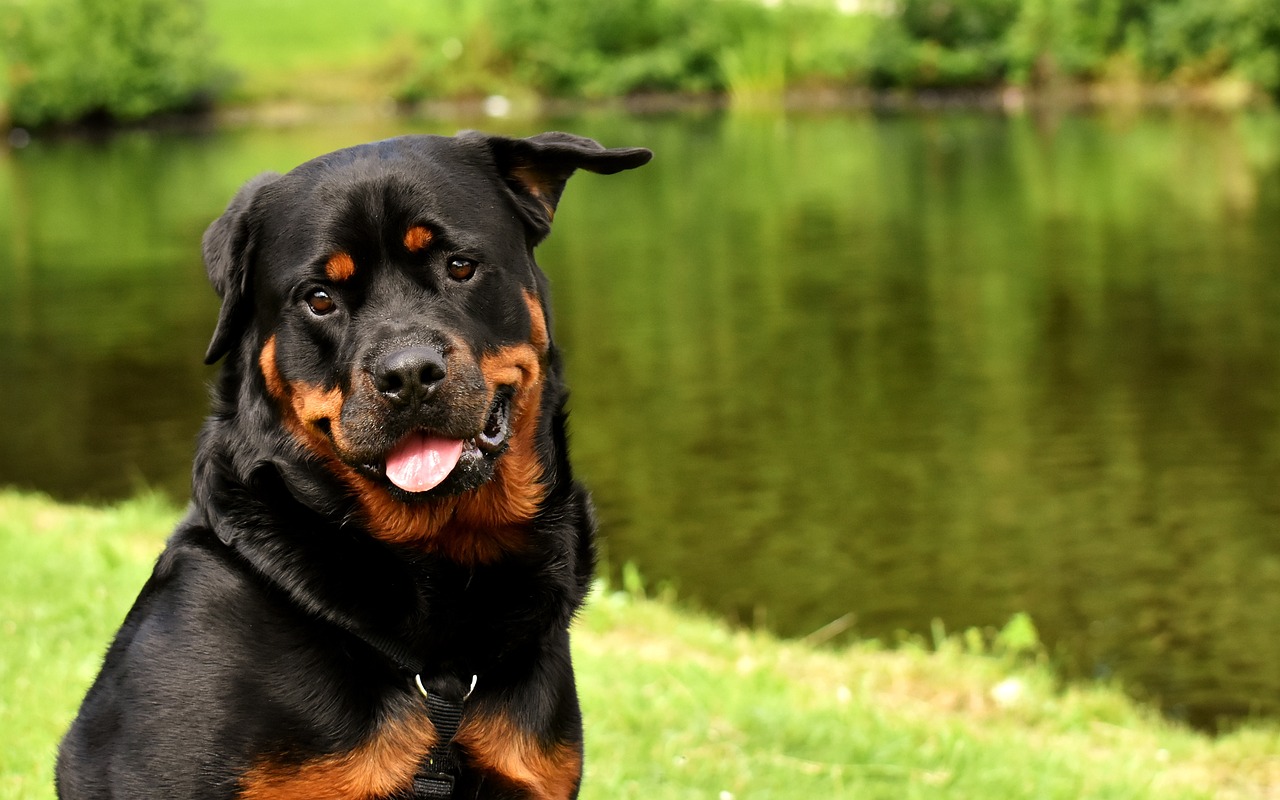
Credit Unsplash.com User @Unkown
2. Furrowed Eyebrows
If a Rottweiler’s eyebrows are furrowed or drawn together, it can signify concentration or concern. This expression may be seen when they are focusing on a task or something that requires their attention.
Furrowed eyebrows, particularly in dogs can also indicate worry and tension, or discomfort. But not always in a negative sense.
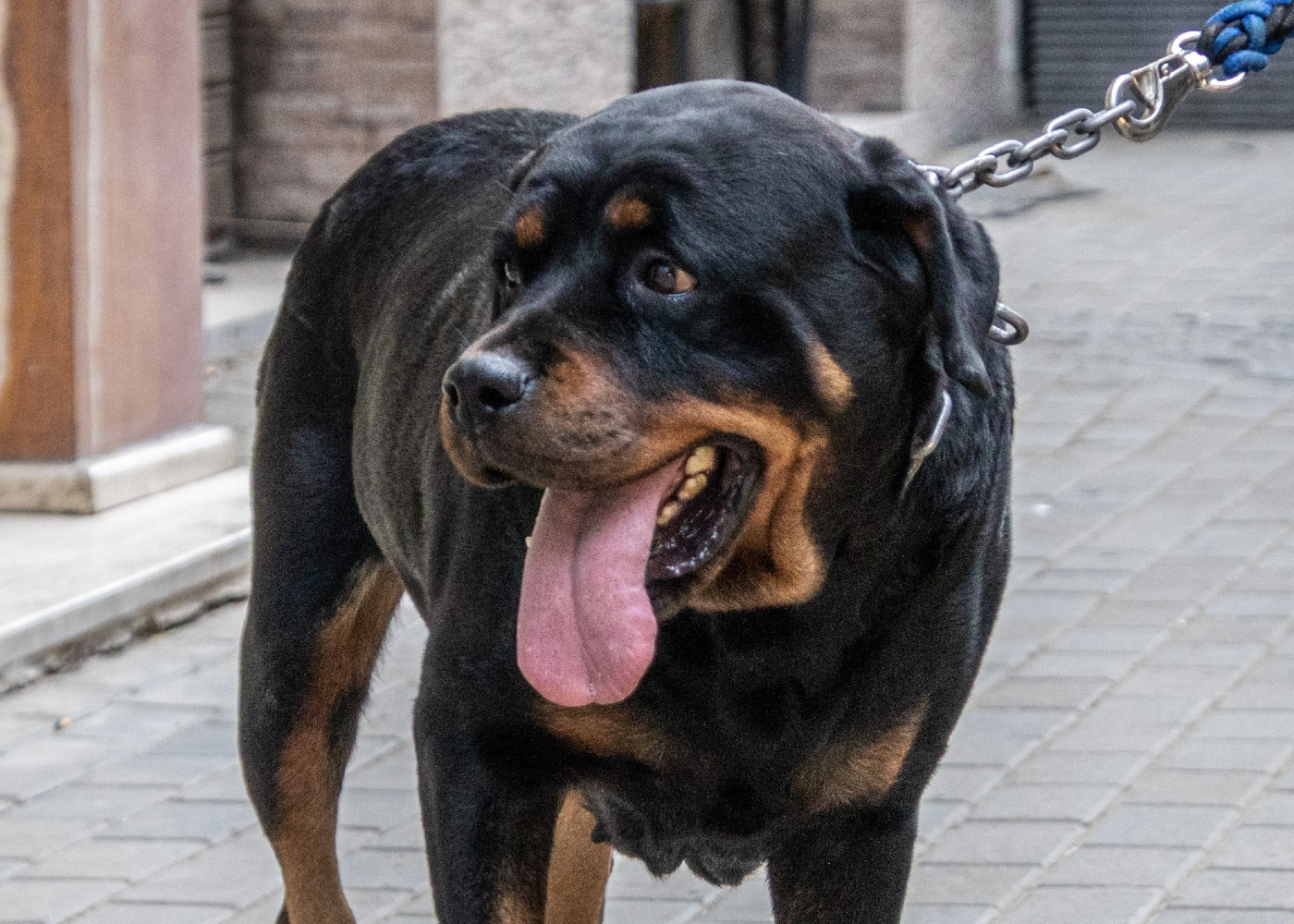
Credit Unsplash.com User @Unkown
3. Relaxed Eyebrows
When a Rottweiler’s eyebrows are in a neutral position, it generally means they are calm and content. This is the typical expression you may see when the dog is not experiencing any specific emotions.
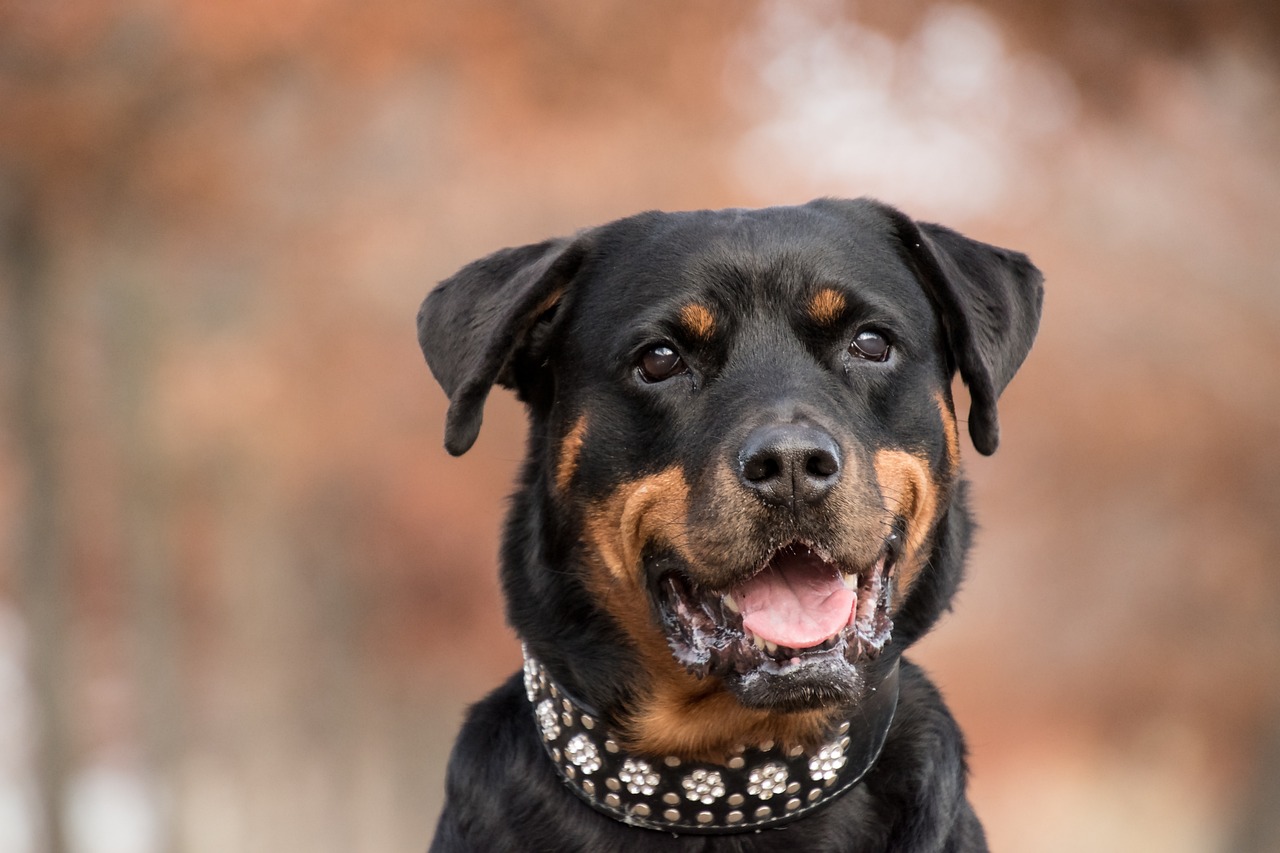
Credit Unsplash.com User @Unkown
Relaxed eyebrows can usually mean anything so there is nothing that could be alarming in their behaviour.
4. Side eye
Like humans, Rottweilers also have a side eye stare. They use this when focusing or when something has their attention.
Rottweilers may turn their heads or glance sideways to direct their attention to something interesting or important in their environment. It could be a noise, movement, or object that has captured their interest.
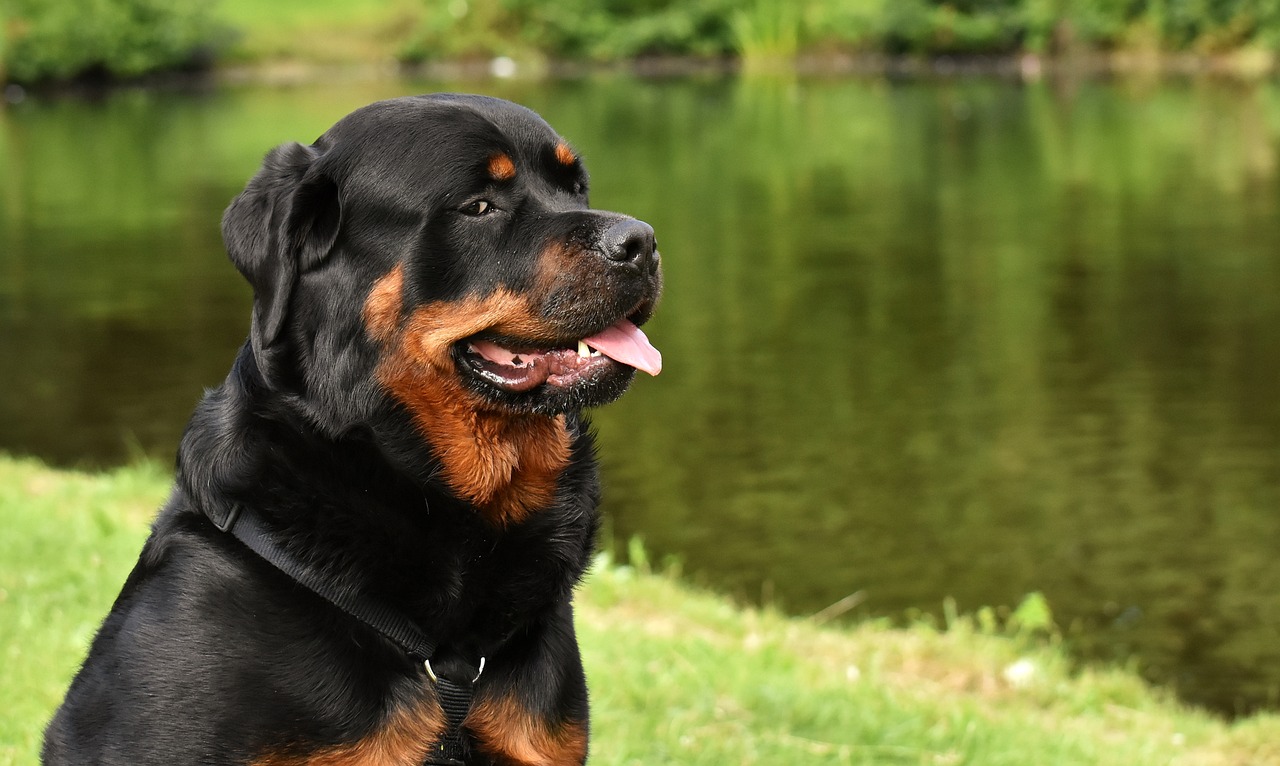
Credit Unsplash.com User @Unkown
Dogs are naturally alert animals, and they may use a sidelong glance to monitor their surroundings for potential threats or unfamiliar situations. This behavior helps them stay vigilant and aware of their environment.
But dogs can often display a side eye when they feel unsure or uncomfortable in a particular situation. It can be a sign of caution or mild anxiety, indicating they are feeling a bit uncertain.
Can Rottweilers understand us?
Until now, we have discovered that Rottweilers use their eyebrows to manage and express their own emotions. But are they able to understand our emotions as well?
Rottweilers, like many other dog breeds, have the ability to understand humans to some extent. Usually smarter breeds can understand humans better, but all breeds to some amount.
Dogs are sociable animals and they posses an ability to read human cues, including body language, tone/type of voice, and facial expressions.
Rottweilers can respond to human emotions through their interaction with their owners and they can pick up on facial expressions and vocal pointers. For example, they may recognise when their owner is happy or upset based on the their behavior and expressions. From a young age dogs are able to learn from their owners, the more time you spend on interacting with your dogs, the higher the emotional intelligence the dog will have.
Final Thoughts
Rottweilers, like most dogs have an ability to communicate using their facial expressions and convey their emotions. Through the position of their ears, eyes, mouth, and overall body language, dogs, including Rottweilers, convey a range of emotions, intentions, and desires to their human companions.
Understanding these nonverbal messages allows us to build on our bond with our canine companions enabling us to have a better connection. So, the next time you interact with a Rottweiler or any other dog, pay close attention to their facial expressions and the messages they convey.
FAQ
Q: Can Rottweilers read my facial expressions?
Yes, like most intelligent dogs, Rottweilers primarily rely on a combination of facial expressions and body language to understand and respond to human emotions. Rottweilers are known for their loyalty, affection, and protective nature towards their families, this can only be helped by their ability to understand your facial gestures and expressions.
Q: Do Rottweilers smile?
Rottweilers don’t naturally smile in the same way humans do, as they don’t have the same facial muscles. However, some of their expressions can sometimes be interpreted as a smile. When a Rottweiler is relaxed, their mouth may be slightly open, giving the appearance of a smile.
Q: Are Rottweilers smart?
Rottweilers are regarded as one of the smartest dog breeds. They are generally known for their intelligence, trainability, and willingness to work. Rottweilers have a strong desire to please their owners, which can make them highly responsive to training and quick learners. However, it’s important to note that intelligence can vary, so it’s best to socialise and train your dog well from a young age.
Q: Are Rottweilers good at showing affection?
Yes, Rottweilers can be very affectionate dogs. They often form strong bonds with their family members especially children. However, each dog is unique, and individual Rottweilers may have different ways of showing affection.
Q: How can I tell if a Rottweiler is happy?
A happy Rottweiler will typically show relaxed body language. They may have a loose and wagging tail, ears held naturally (neither pinned back nor erect), and a relaxed facial expression. Their eyes will be bright and alert, and they may also show playful behaviour.


4 thoughts on “Do Rottweilers Have Eyebrows?”
Comments are closed.